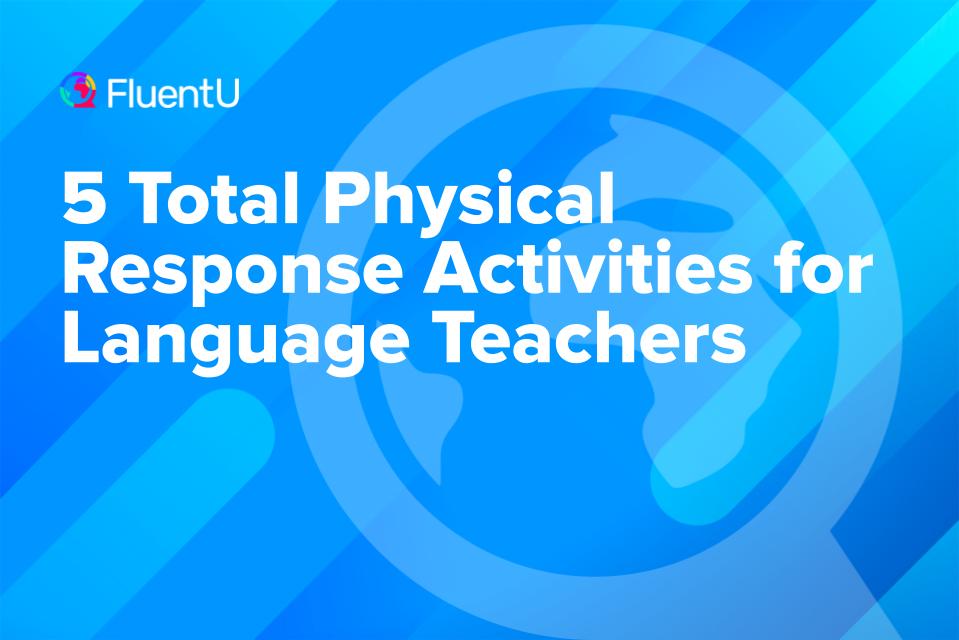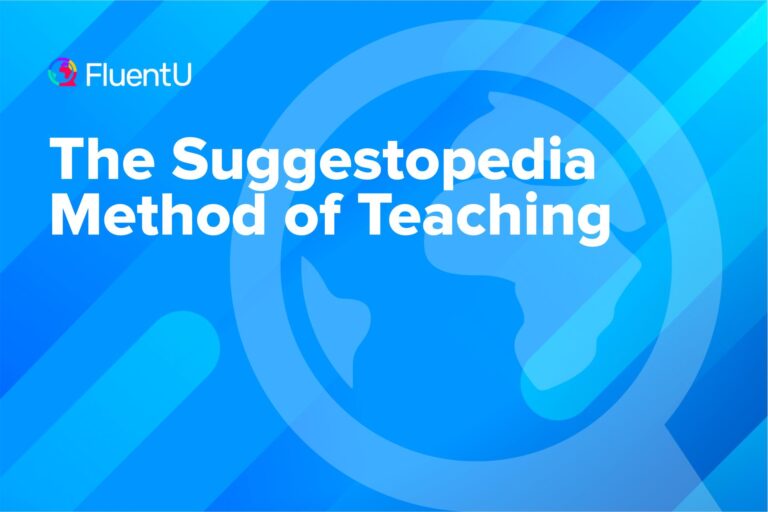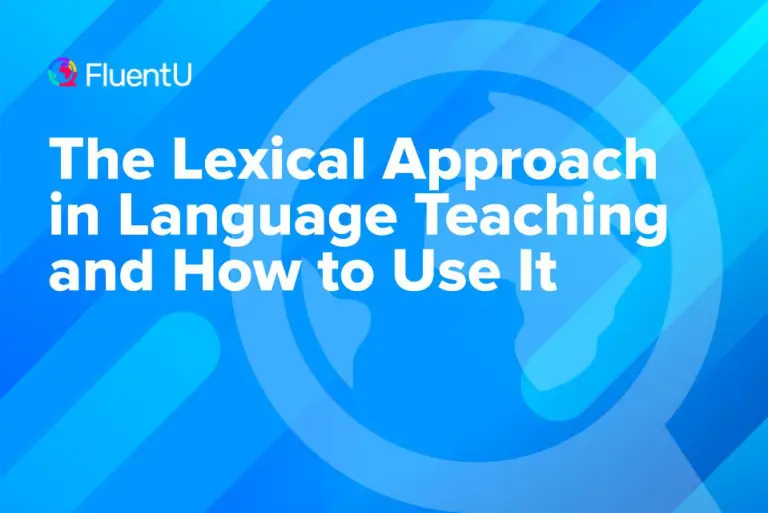5 Total Physical Response Activities for Language Teachers

Want a teaching technique that’ll make your students jump for joy, dance with delight and finish off with high fives? Sounds like you’re looking for a language teaching approach called total physical response or TPR for short. TPR will change how you see language acquisition.
Instead of asking your students to be quiet and sit still, you’ll be requiring them to stand up, move around the classroom and get physical. Let’s find out more about TPR, and then I’ll show you five engaging total physical response activities to use in your own classroom.
Download: This blog post is available as a convenient and portable PDF that you can take anywhere. Click here to get a copy. (Download)
What is Total Physical Response?
Total physical response is an approach to teaching second languages that was developed in the 1970s by James Asher, professor of Psychology at the San Jose State University in California.
Asher saw that children’s early language repertoire consisted mainly of listening to adults telling them what to do: “Pick up the ball.” “Sit down.” “Open your mouth.” “Look at me.”
The child would look to the parents for instructions, and then perform the movements required. The child didn’t need to be able to say the words, only to listen and understand. Comprehension was the first step to language acquisition, not word production.
Asher adopted this practice and the simple listen and respond technique now sits at the heart of TPR.
For example, you could teach “¡Siéntense!” (sit down) in a Spanish class by repeatedly sitting down and saying “Siéntense.” You can ask the class to join you in sitting down, even making a game out of it, or commenting on the manner that some students sit.
Total Physical Response Activities
1. TPR Storytelling Session
Tell a story to the whole class. It can be about anything: fairytale, adventure, even horror and comedy. Tell it with plenty of gestures and actions, which you repeat often. (That’s the TPR way!)
A TPR story shares all the elements of a great tale: a relatable main character, a captivating plot and an ending that rewards the listeners.
But in addition to these, a foreign language teacher employing TPR must remember that the story is used to teach meaning. So a TPR story would use a good mix of the students’ native language and the target language. Especially for beginners, a healthy dose of the students’ native language might be used, with a peppering of the target language.
And because the story is a vehicle for teaching meaning, repetition of key phrases and their attending movements are the order of the day. You should really focus on key phrases you want to teach the class, not the story itself. The plot, the twists and turns of the story come second to the meaningful and memorable words and phrases you want your wards to integrate into their long-term memory.
So for example, in teaching the Spanish words for the different parts of the body, you might employ the tale of a young Billy who goes to the city for the very first time. And each time you talk about the many wonderful things he sees with his eyes (i.e. buses, buildings and airplanes), you emphasize the word ojos (eyes) while at the same time pointing to your eyes. It’s also important that you widen your eyes as you point to them.
Keep repeating “ojos” and pointing to your eyes as you go through the awesome things Billy sees in the city. He sees a fleet of cars, “ojos.” He sees a dog walker, “ojos.”
There are ways you can employ repetition in the story without being repetitive. For example, with ojos, you can do the following:
- Point to your own eyes
- Ask the students to point to their own eyes
- Ask students to point to your eyes (or a classmate’s)
(And as a comprehension check, you can point to your tummy and see if your students try to correct you.)
This technique also works for all the other parts of the body. The nariz (nose) for everything he smells: freshly baked bread, flowers at the park and the smoke from cars. Orejas (ears) for everything that catches his attention: the sound of cars honking, the tumult at the market and the powerful blasts of a plane taking off.
You can actually set your story so little Billy, the main character, can interact and visit places that will give you maximum opportunity to repeat meaningful words and phrases. The plot is but a vehicle, so don’t worry so much about it.
2. Simon Says with a Twist
A vocabulary-oriented game like Simon Says is analogous to the process that takes place as children acquire their first language. Adults often give instructions to kids, like “throw the ball” “come here” or “eat your chicken.” (By virtue of repetition and validation—and gesturing—children are able to figure out what mommy wanted to be done.)
In this activity, you organize the class into two groups. You can go boys vs. girls (always a hit!) or any grouping you want. Each group sends a representative for every round. They stand at the back of the class, near the wall, with their eyes fixed on you.
You will play “Simon” and come up with creative commands and actions which your students would then have to perform. So in a French class you might say, “Sautez trois fois!” (Jump three times) or “Pleurez!” (cry). The student who gives the correct response gets to take a step forward toward the “Finish Line.” Reaching the finish line first wins 1 point for the team. The team who gets 5 points first wins the game.
Not everyone gets to play each time, but spectators will not only get to cheer for their team, they’ll also learn the target language in the process.
Play this game often and you will have natural rivalries arise. And that’s also when the learning really heats up.
Here’s an example of a version of Simon Says in an ESL classroom:
3. The Amazing Race
I’m sure you’ve seen “The Amazing Race” on TV. But with this activity, you don’t have to send the class on a thrilling trip around the world. You only have to send them off to do some task or demonstrate comprehension by performing prescribed motions. (With TPR, you can always check for comprehension because you can just look at their actions.)
Group the class into four or five teams. Each team would ideally be composed of three to four players. The tasks that you choose to give your students are only limited by your imagination—but instead of writing out the tasks, give them verbally.
For example, one task can be a “bring me” scenario and you can tell the teams in your Spanish class to bring you an amarillo (yellow) object. Or you can ask the class to griten (shout) their favorite color.
You can go outside the classroom for this activity and have it in the schoolyard. You can tell your students to bring in the garbage bins (two birds with one stone, if you ask me), pick up twenty dried leaves, arrange flower pots in a line, etc. You can ask the groups to dance the cha-cha, move to the “Macarena” or sing “Happy Birthday.”
With “The Amazing Race” as one of your total physical response activities, your class will be racing to language acquisition.
4. TPR Theater
This one’s for those a little bit advanced in the target language since “TPR Theater” has some improv added into the mix. It is, for all intents and purposes, an impromptu play. Your role as the teacher is to narrate and move the story forward by telling the characters in front of the class what they need to do.
Think of yourself as a benevolent narrator and puppet master where the bit players are to do your every bidding.
Okay, first things first. Determine what your play will be. Is it a love story? An epic adventure? A contemporary comedy? Knowing this will dictate the number of characters, the nature of events in the story and their reactions to it.
Let’s say you have a love story. You should then have at least two students to play the role of lovers, and perhaps another one to function as a foil and complete the love triangle.
Or, if you want to have more students in the play, you can create characters like the evil mother-in-law, the jealous friend and the nervous aunt. (But don’t involve everybody in the play, otherwise there’ll be no audience. Those who don’t play parts in the drama today will get their chance to strut out their acting chops the next time.)
So for example, say there’s one particular scene where the lovers are bonding at the park. In a German class you might bark some funny instructions to your bit players, like “kneife sie in die Wange!” (pinch her nose) or “kitzle sie…” (tickle her…)
Again, in this case, where the plot takes you or how it ends doesn’t really matter. These are not the most important things so don’t obsess over them. The whole affair is really just an excuse to practice the target language. So keep it light. Help the students if they have comprehension difficulties. Don’t be afraid to drop everything midway if it means explaining something about the target language.
5. Action Songs for the Whole Class
Action songs are actually TPR–but with music. Children love them. They add melody and cadence that the brain can latch on to. They are the perfect memory aids that can effectively embed language and movement into long-term memory.
Singing together as a class is a great memory-enhancing tool. Did you notice that even as adults, we find it hard to jettison the nursery rhymes and songs of our childhood? It may have been 40 years ago, but they are as fresh as the morning we learned it in class.
So lead the class in action songs (here’s a great listing of children’s songs and rhymes by language, by the way). But you don’t have to rely on the nursery classics for action songs. The classics all began with a creative teacher, alone in her room, coming up with gestures to accompany the lines. You can create actions for any song that you want, including pop music in the target language.
Here’s a simple children’s song that could help you run this activity for students who are learning English:
First, determine the important words in the song. That is, the words you want to embed into your students’ memories. (Don’t gesture out each word in the song, that’ll be too overwhelming.)
Second, pick the appropriate accompanying gestures for your words. The action may seem obvious for words like “jump,” “look,” “laugh,” etc. But how about when the song has words like “hope” or “integrity”? These will force you to be creative and think outside the box.
You’ll have to think of situations in which “hope” or “integrity” is displayed or practiced. “Hope” is displayed during prayer, for example, by people hoping to get their prayers answered. So your action can perhaps be interlacing fingers, just like a prayer position. “Integrity” is often displayed by someone giving a persuasive speech. Your action can then be a pounding fist.
Remember, the gestures need not be spot on. They only need to be a semblance of the thing they signify.
When coming up with actions to go with your song, aside from creativity, go for a little bit of exaggeration. Take the word “see” for example. Instead of simply pointing to your eyes, mimic a telescoping gesture or place a horizontal palm above your eyebrow and swing your neck from left to right, looking out into the distance.
It makes the lyrics of the song more vivid and more engaging for your students. And speaking of lyrics, don’t teach the songs line-by-line or distribute lyrics (if possible). Instead, teach the song as a whole—with music and the accompanying gestures. The goal here is not to make the students memorize the lyrics. It’s to let them understand what they are singing about: comprehension.
The Philosophies Behind Total Physical Response
Listening Comes Before Production
TPR considers comprehension as the highway to language acquisition. So the first goal of TPR is to make the students understand what the word, phrase, command or expression is all about. There’s no push to produce the correct sounds, but there’s an invitation for students to listen and observe.
That means that listening is a crucial first step to learning any language, whether listening to the teacher, a song or the audio from a video from a language learning program such as FluentU.
FluentU allows your students to watch authentic videos in different languages, with the help of interactive dual-language subtitles. They can revise words they don’t know with the flashcard feature, making it a great way to improve comprehension over time.
“Acquisition” over “Learning”
Language learning is often concerned with the form—the correct grammatical structures and correct pronunciation of the target language. A grammar textbook, flashcards and vocabulary lists are examples of learning materials.
Language acquisition on the other hand is concerned with substance: the immersive experience of using language in one’s everyday affairs. Language learning is often conscious and formal. Language acquisition is more personal and natural–almost an afterthought.
The benefit of TPR is that it provides language acquisition experiences for your students in the classroom setting. TPR concerns itself with meaning, so your students will have communicative use of the language, instead of just knowing the rules of grammar.
Acquisition Should Be Stress-free
When Professor Asher developed TPR, he made sure that the approach to teaching the language was stress-free for both teachers and students. He posited that another reason why students don’t learn is that they get emotionally overwhelmed by the language. It can be a frightening experience that lowers self-esteem.
TPR is judgment-free. It just wants the students to have fun. As far as the students are concerned, they’re just playing a game, listening for the next instructions–goofing around.
But we know better than that. We know, as teachers, that there’s something else going on behind the scenes. We know vocabulary words are understood, appreciated and stored for the long haul.
We teachers often are looking for ways to make the lessons fun, engaging and memorable. With TPR, you’ve got an approach where “stress-free” is philosophically embedded into the whole thing.
So those are your five classroom total physical response activities. Try them in your language class and set language acquisition on fire. Because nothing is as rewarding as seeing your students pick up a beautiful language.
Download: This blog post is available as a convenient and portable PDF that you can take anywhere. Click here to get a copy. (Download)







